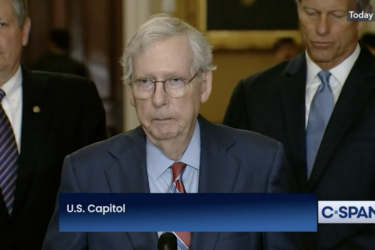
The season of coughing is around the corner. Ads for flu shots and other vaccinations are getting thicker too. Vaccinations for older adults have new developments this year. A great place to start is this tip sheet from Eileen Beal.
Herd immunity: When writing about vaccines for a certain age group, remember that your audience is not just that group. Communities are protected by the entire immunity of their neighbors and friends. Elders housed in assisted living or nursing homes are at special risk. But college student volunteers, visitors, and grandchildren may need to read your story to avoid unwittingly exposing these older adults. This works backwards also. Older adults who lack up-to-date immunization for whooping cough (pertussis) can expose a newborn when Grandma and Grandpa visit. The booster that many may need is called T-DAP.
Immune response: Fascinating science here about how different people respond to vaccines. Healthy young people typically mount a bigger response (building up antibodies) when given a vaccine. The elderly sometimes don’t, which means vaccines aren’t as effective in protecting them. There are science issues related to all of this. Just recently, the CDC’s committee on vaccines decided to recommend a pneumonia vaccine – Prevnar13 – for older adults, even if they have already had a different pneumonia vaccine. Here is an update on a specific stronger flu vaccine also available for older adults.
Price and access: Who is not able to afford or reach convenient vaccinations in your community? Pay attention to budget cuts related to city and county health departments this year. In Seattle, for example, the health department suffered major cuts. Ask the money questions of experts in your community – are vaccines easier or harder to get for low-income seniors? What about the increasing role of drugstores vs. health-care practitioners in providing vaccines?
Disparities: Both African Americans and Hispanic adults over age 65 get fewer flu and pneumonia vaccinations. Find better ways to communicate risk and consider partnering with other platforms to get your stories to circulate widely.
Social media: You may subscribe to alerts about the flu or other diseases from the CDC or your regional health organizations. You may wish to follow the @CDCFlu or @FLUgov or state or local health officials on Twitter or other platforms. You can watch live chats or livestream videos and hear public questions and get story ideas from confusion you hear expressed via questions. Here is the archive of a chat conducted in October by the The Plain Dealer in Cleveland. Maybe you will decide to organize a live chat yourself.
Cold winds can make for hot stories.









